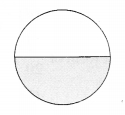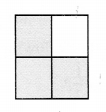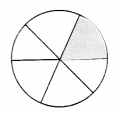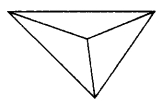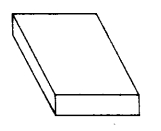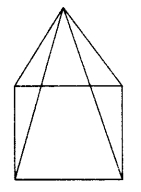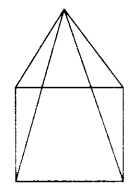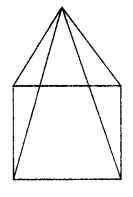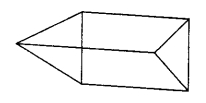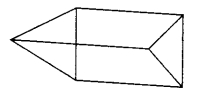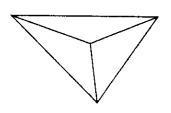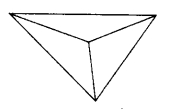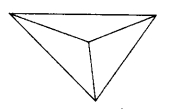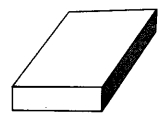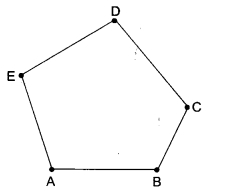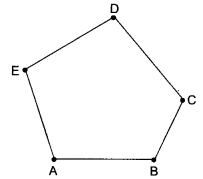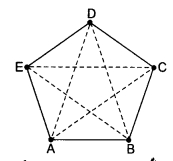Check the below NCERT MCQ Questions for Class 6 Maths Chapter 8 Decimals with Answers Pdf free download. MCQ Questions for Class 6 Maths with Answers were prepared based on the latest exam pattern. We have provided Decimals Class 6 Maths MCQs Questions with Answers to help students understand the concept very well. https://mcqquestions.guru/mcq-questions-for-class-6-maths-chapter-8/
Students can also refer to NCERT Solutions for Class 6 Maths Chapter 8 Decimals for better exam preparation and score more marks.
Decimals Class 6 MCQs Questions with Answers
MCQ On Decimals For Class 6 Chapter 8 Question 1.
3 – tenths =
(a) 0.3
(b) 0.03
(c) 0.003
(d) 0.0003.
Answer
Answer: (a)
Class 6 Maths Chapter 8 MCQ Question 2.
Two tens and 2-tenths =
(a) 20.2
(b) 2.02
(c) 202
(d) none of these.
Answer
Answer: (a)
MCQ Questions For Class 6 Maths Chapter 8 Question 3.
One hundred and 1 – one =
(a) 101
(b) 1.01
(c) 10.1
(d) 0.101.
Answer
Answer: (a)
Class 6 Decimals MCQ Chapter 8 Question 4.
Twelve point one =
(a) 12.1
(b) 12.01
(c) 1.21
(d) 0.121.
Answer
Answer: (a)
Decimals MCQ Class 6 Chapter 8 Question 5.
\(\frac { 2 }{ 10 }\) =
(a) 0.2
(b) 0.02
(c) 0.002
(d) 0.0002
Answer
Answer: (a)
MCQ Of Decimals Class 6 Chapter 8 Question 6.
\(\frac { 12 }{ 10 }\) =
(a) 0.12
(b) 1.2
(c) 1.02
(d) 1.002
Answer
Answer: (b)
Class 6 Maths Decimals MCQ Chapter 8 Question 7.
\(\frac { 22 }{ 10 }\) =
(a) 0.22
(b) 2.2
(c) 2.02
(d) 2.002
Answer
Answer: (b)
Class 6 Maths Ch 8 MCQ Question 8.
1 + \(\frac { 1 }{ 10 }\) =
(a) 0.11
(b) 1.1
(c) 1.01
(d) 1.001
Answer
Answer: (b)
MCQ Questions On Decimals For Class 6 Chapter 8 Question 9.
\(\frac { 5 }{ 2 }\) =
(a) 0.5
(b) 0.2
(c) 2.5
(d) 0.25
Answer
Answer: (c)
MCQ Decimals Class 6 Chapter 8 Question 10.
\(\frac { 3 }{ 5 }\) =
(a) 0.6
(b) 0.006
(c) 0.0006
(d) 0.06
Answer
Answer: (a)
MCQ Questions For Class 6 Maths Decimals Chapter 8 Question 11.
2 \(\frac { 1 }{ 10 }\) =
(a) 2.1
(b) 2.01
(c) 2.001
(d) 2.0002
Answer
Answer: (a)
Ncert Class 6 Maths Chapter 8 MCQ Question 12.
\(\frac { 16 }{ 5 }\) =
(a) 0.32
(b) 3.2
(c) 3.02
(d) 3.002
Answer
Answer: (b)
Decimals Class 6 Worksheet MCQ Chapter 8 Question 13.
0.4 =
(a) \(\frac { 1 }{ 5 }\)
(b) \(\frac { 2 }{ 5 }\)
(c) \(\frac { 3 }{ 5 }\)
(d) \(\frac { 4 }{ 5 }\)
Answer
Answer: (b)
MCQs On Decimals Class 6 Chapter 8 Question 14.
1.5 =
(a) \(\frac { 1 }{ 2 }\)
(b) \(\frac { 5 }{ 2 }\)
(c) \(\frac { 3 }{ 2 }\)
(d) \(\frac { 7 }{ 2 }\)
Answer
Answer: (c)
Class 6 Maths Chapter 8 MCQ Questions Question 15.
3.2 =
(a) \(\frac { 16 }{ 5 }\)
(b) \(\frac { 8 }{ 5 }\)
(c) \(\frac { 32 }{ 5 }\)
(d) \(\frac { 24 }{ 5 }\)
Answer
Answer: (a)
MCQ Class 6 Maths Chapter 8 Question 16.
1.0 =
(a) \(\frac { 1 }{ 1 }\)
(b) \(\frac { 1 }{ 2 }\)
(c) \(\frac { 2 }{ 4 }\)
(d) \(\frac { 3 }{ 9 }\)
Answer
Answer: (a)
Class 6 Math Chapter 8 MCQ Question 17.
1 mm=
(a) 0.1 cm
(b) 0.01 cm
(c) 0.001 cm
(d) 0.0001 cm.
Answer
Answer: (a)
Class 6 Decimal MCQ Chapter 8 Question 18.
10mm =
(a) 1.0 cm
(b) 0.1cm
(c) 0.01 cm
(d) 0.001 cm.
Answer
Answer: (a)
MCQ On Decimals Class 6 Chapter 8 Question 19.
2 cm 2 mm =
(a) 2.2 cm
(b) 0.22 cm
(c) 2.1 cm
(d) 1.2 cm.
Answer
Answer: (a)
Question 20.
111 mm =
(a) 11.1 cm
(b) 1.11cm
(c) 0.111 cm
(d) 0.0111 cm.
Answer
Answer: (a)
Question 21.
Between which two whole numbers on the number line does the number 0.5 lie?
(a) 0 and 1
(b) 1 and 2
(c) 2 and 3
(d) – 1 and 0.
Answer
Answer: (a)
Question 22.
Between which two whole numbers on the number line does the number 3.3 lie?
(a) 0 and 1
(b) 1 and 2
(c) 2 and 3
(d) 3 and 4.
Answer
Answer: (d)
Question 23.
Between which two whole numbers on the number line does the number 5.3 lie?
(a) 1 and 2
(b) 2 and 3
(c) 3 and 4
(d) 5 and 6
Answer
Answer: (d)
Question 24.
0.02 =
(a) \(\frac { 1 }{ 25 }\)
(b) \(\frac { 1 }{ 50 }\)
(c) \(\frac { 1 }{ 100 }\)
(d) \(\frac { 1 }{ 10 }\)
Answer
Answer: (b)
Question 25.
1.44 =
(a) \(\frac { 36 }{ 25 }\)
(b) \(\frac { 72 }{ 25 }\)
(c) \(\frac { 36 }{ 50 }\)
(d) \(\frac { 72 }{ 100 }\)
Answer
Answer: (a)
Question 26.
10 + 2 + \(\frac { 1 }{ 10 }\) + \(\frac { 2 }{ 100 }\) =
(a) 12.12
(b) 12.21
(c) 11.11
(d) 21.12
Answer
Answer: (a)
Question 27.
111 + \(\frac { 1 }{ 100 }\) =
(a) 111.01
(b) 111.1
(c) 111.001
(d) 111.0001
Answer
Answer: (a)
Question 28.
\(\frac { 2 }{ 10 }\) + \(\frac { 3 }{ 100 }\) + \(\frac { 4 }{ 1000 }\) =
(a) 0.234
(b) 2.34
(c) 23.4
(d) 234
Answer
Answer: (a)
Question 29.
12 + \(\frac { 2 }{ 10 }\) + \(\frac { 4 }{ 1000 }\) =
(a) 12.204
(b) 12.204
(c) 12.402
(d) 12.240
Answer
Answer: (a)
Question 30.
0.005 =
(a) \(\frac { 1 }{ 2 }\)
(b) \(\frac { 1 }{ 20 }\)
(c) \(\frac { 1 }{ 200 }\)
(d) \(\frac { 1 }{ 2000 }\)
Answer
Answer: (c)
Question 31.
0.625 =
(a) \(\frac { 1 }{ 8 }\)
(b) \(\frac { 2 }{ 8 }\)
(c) \(\frac { 3 }{ 8 }\)
(d) \(\frac { 5 }{ 8 }\)
Answer
Answer: (d)
Question 32.
10 paise =
(a) 0.1 rupee
(b) 0.01 rupee
(c) 0.001 rupee
(d) 0.0001 rupee.
Answer
Answer: (a)
Question 33.
8cm =
(a) 0.8 m
(b) 0.08 m
(c) 0.008 m
(d) 0.0008 m.
Answer
Answer: (b)
Question 34.
40 mm=
(a) 4 cm
(b) 8 cm
(c) 0.4 cm
(d) 0.04 cm.
Answer
Answer: (a)
Question 35.
5m =
(a) 0.5 km
(b) 0.05 km
(c) 0.005 km
(d) 0.0005 km.
Answer
Answer: (c)
Question 36.
55 m=
(a) 0.055 km
(b) 0.35 km
(c) 0.0055 km
(d) 5.5 km.
Answer
Answer: (a)
Question 37.
5g =
(a) 0.005 kg
(b) 0.05 kg
(c) 0.5 kg
(d) none of these.
Answer
Answer: (a)
Question 38.
5 kg 5 g =
(a) 5.005 kg
(b) 5.05 kg
(c) 5.5 kg
(d) 0.55 kg.
Answer
Answer: (a)
Question 39.
12 kg 20 g =
(a) 12.02 kg
(b) 12.2 kg
(c) 12.002 kg
(d) 12.0002 kg.
Answer
Answer: (a)
Question 40.
1 kg 500 g =
(a) 1.5 kg
(b) 1.05 kg
(c) 1.005 kg
(d) 1.0005 kg.
Answer
Answer: (a)
We hope the given NCERT MCQ Questions for Class 6 Maths Chapter 8 Decimals with Answers Pdf free download will help you. If you have any queries regarding Decimals CBSE Class 6 Maths MCQs Multiple Choice Questions with Answers, drop a comment below and we will get back to you soon.

